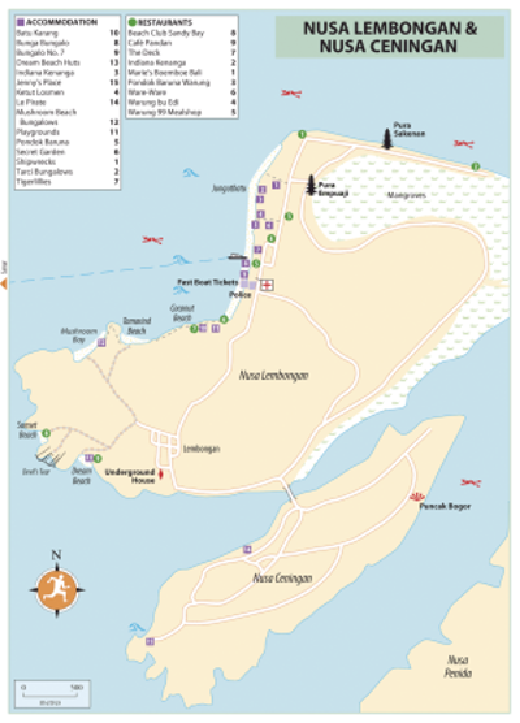Travel Reference
In-Depth Information
Of the trio,
Nusa Lembongan
has nearly all the facilities. Even though it's developing rap-
idly, it remains relaxed, with most accommodation slotted in between homes. Activities pro-
viders offer trips both on foot and on two wheels. Tiny undeveloped
Nusa Ceningan
is best
seen as an afterthought to Nusa Lembongan - it's linked by a bridge - and has few sights.
Nusa Penida
is the largest of all and more rugged than Nusa Lembongan. Apart from a few
guesthouses and the odd simple tourist warung, it remains almost entirely undeveloped - ripe
for a few days' exploration for the adventurous.
Nusa Lembongan
Yes, there are now boutique hotels. And each visit reveals a new patch of scrub cleared for
yet another homestay or yet more motorbikes on the lanes. But
NUSA LEMBONGAN
re-
tains its village ambience - you can sense the island atmosphere as soon as you wade off
the boat. Even the hawkers are half-hearted. Tourism has most definitely arrived - around
seventy percent of the seven thousand population are engaged in tourism to some degree -
yet it is restricted to
Jungutbatu
village in the north and the
Lembongan
area in the south.
Of the two Jungutbatu is by far the larger, with the most accommodation; though there are a
few high-end hotels in the south, most people head to
Mushroom Bay
on a day-trip for its
slightly better swimming.
Previously, the island earned a crust by
seaweed farming
in the aquamarine shallows. A
source of
agar
vegetable gel and
carrageenan
used in cosmetics and foodstuffs, seaweed is
grown on chequerboard bamboo frames and harvested after 45 days - hard, physical work
with unpredictable financial rewards. This makes much of the coast so-so for swimming, but
there are some pretty white-sand bays that are good for a dip so long as you heed local warn-
ings about currents. Mangroves fringe much of the north and east coast.

